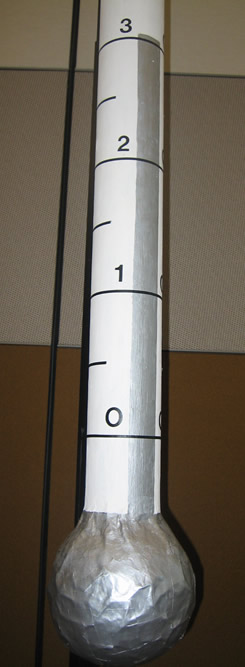Mercury Exchange Program
Over the past several decades mercury has become recognized world-wide as a significant environmental pollutant, as well as a serious potential public health hazard. The Environmental Protection Agency (EPA) has implemented a number of programs in recent years designed to reduce the production and use of mercury containing materials and devices.
These devices include (but are not limited too):
- Manometers
- Barometers
- Coulter Counters
- Hydrometers
- Mercury Switches
- Sphymomanometers
Mercury is a highly toxic chemical with a serious inhalation potential from the toxic vapors.
Mercury Exchange Program
In an effort to minimize mercury containing devices on campus, Cornell University has a mercury exchange program. You can find more information about this program in the Mercury Exchange Background document.
Reuniting Separated Fluid Columns in Non-Mercury Thermometers
Useful EPA Mercury Links
What to do in case of a Mercury Spill
Unless the amount is very small and in a well vented area, CALL 911! Cleanup procedures for small Hg spills in well ventilated areas are found below
Small Mercury Spill Clean-Up Procedures
-
Secure the contaminated area to contain the spill and prevent personnel from walking through and spreading contamination.
- If possible, lower the room temperature.
- Open windows and provide as much ventilation as possible until area is cleaned.
- Wear protective gloves when cleaning up mercury spills.
- Carefully pick up larger pieces of glass and segregate from mercury contamination.
- Sweep up mercury and debris with broom or a small brush and dustpan and place in a sealed plastic bag. If no glass or debris is present, use an eyedropper or suction bulb to capture the mercury and place it in a plastic bottle.
- Check to see if any mercury remains in the spill area by turning lights off and using a bright flashlight at a low angle. Mercury will sparkle and be in small round beads. Contact EH&S if any mercury remains in areas that are inaccessible and require vacuuming.
Disposal
-
Dispose of uncontaminated glass and debris as normal trash.
- Label all containers of mercury and/or mercury containing debris with the EH&S, two-part, green and white hazardous waste label. Instructions for use of this label.
Grounds Maintenance manages Universal Waste Lamps containing mercury!


